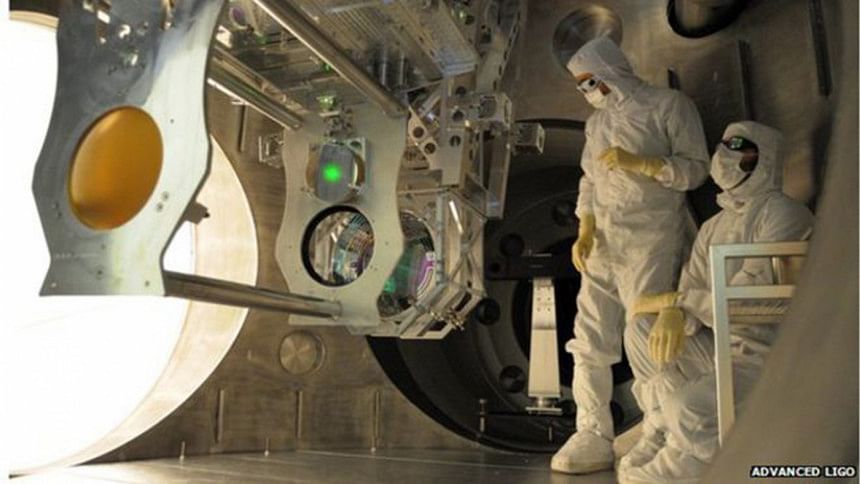Advanced gravity hunt is green lit

One of the great physics experiments of our age looks ready to begin its quest.
Scientists have held a dedication ceremony to inaugurate the Advanced Ligofacilities in the US.
This pair of widely separated laboratories will be hunting for gravitational waves.
These ripples in the fabric of space-time are predicted to result from extreme cosmic events, such as the merger of black holes and the explosive demise of giant stars.
Confirmation of the waves' existence should open up a new paradigm in astronomy.
It is one that would no longer depend on traditional light telescopes to observe and understand phenomena on the sky.
"Advanced Ligo represents a critically important step forward in our continuing effort to understand the extraordinary mysteries of our Universe," said France Córdova, the director of the US National Science Foundation.
"It gives scientists a highly sophisticated instrument for detecting gravitational waves, which we believe carry with them information about their dynamic origins and about the nature of gravity that cannot be obtained by conventional astronomical tools."
Although based in the American states of Washington and Louisiana, and led by the MIT and Caltech institutions, Advanced Ligo is very much an international project.
It has drawn on the expertise of 15 other nations, with particularly significant contributions coming from Germany, the UK and Australia.
Tuesday's dedication ceremony at the Hanford lab in the US northwest paves the way for the experiment to begin its search in earnest towards the end of the year.
Researchers have spent the past eight years, and more than $200m, upgrading equipment at both facilities to a new level of sensitivity.
Ligo stands for Laser Interferometer Gravitational-wave Observatories. Both Hanford and its sister lab in Livingston in the US southeast work on the same principle.
The idea is to split a high-powered laser beam and send separate light paths down two long vacuum tunnels arranged in an L-shaped configuration.
The two paths are then bounced back by mirrors to their starting point, where the beam is reconstructed at detectors.
If gravitational waves have passed through the lab, the light should show evidence at the detectors of having been ever so slightly disturbed.
But the expected weakness of gravitational waves means only astrophysical phenomena on a truly massive scale, such as coalescing compact (neutron) stars, are likely to generate detectable signals.
And even then, the technology has had to be pushed to the limits to get into the sensitivity ranges demanded.

 For all latest news, follow The Daily Star's Google News channel.
For all latest news, follow The Daily Star's Google News channel. 



Comments